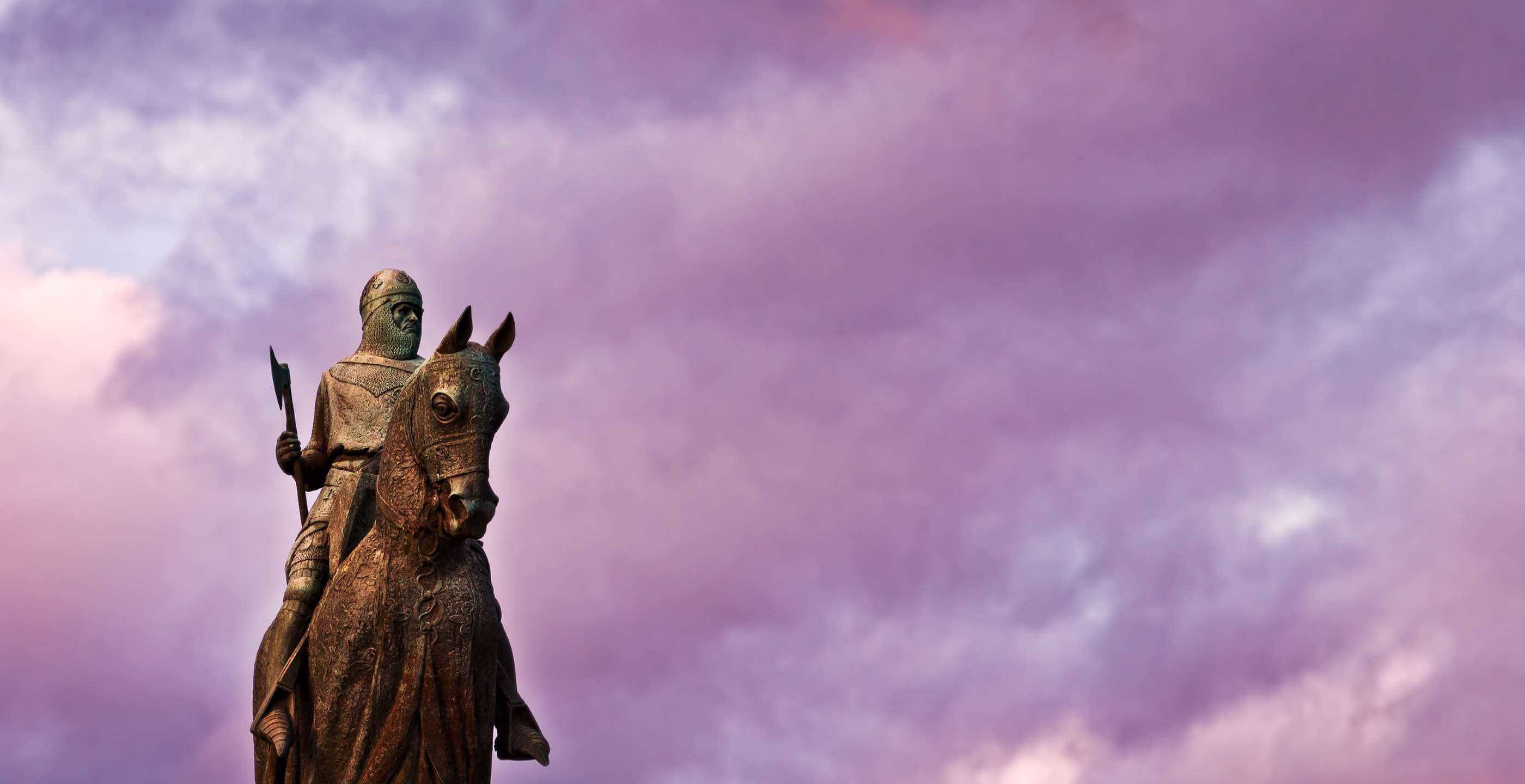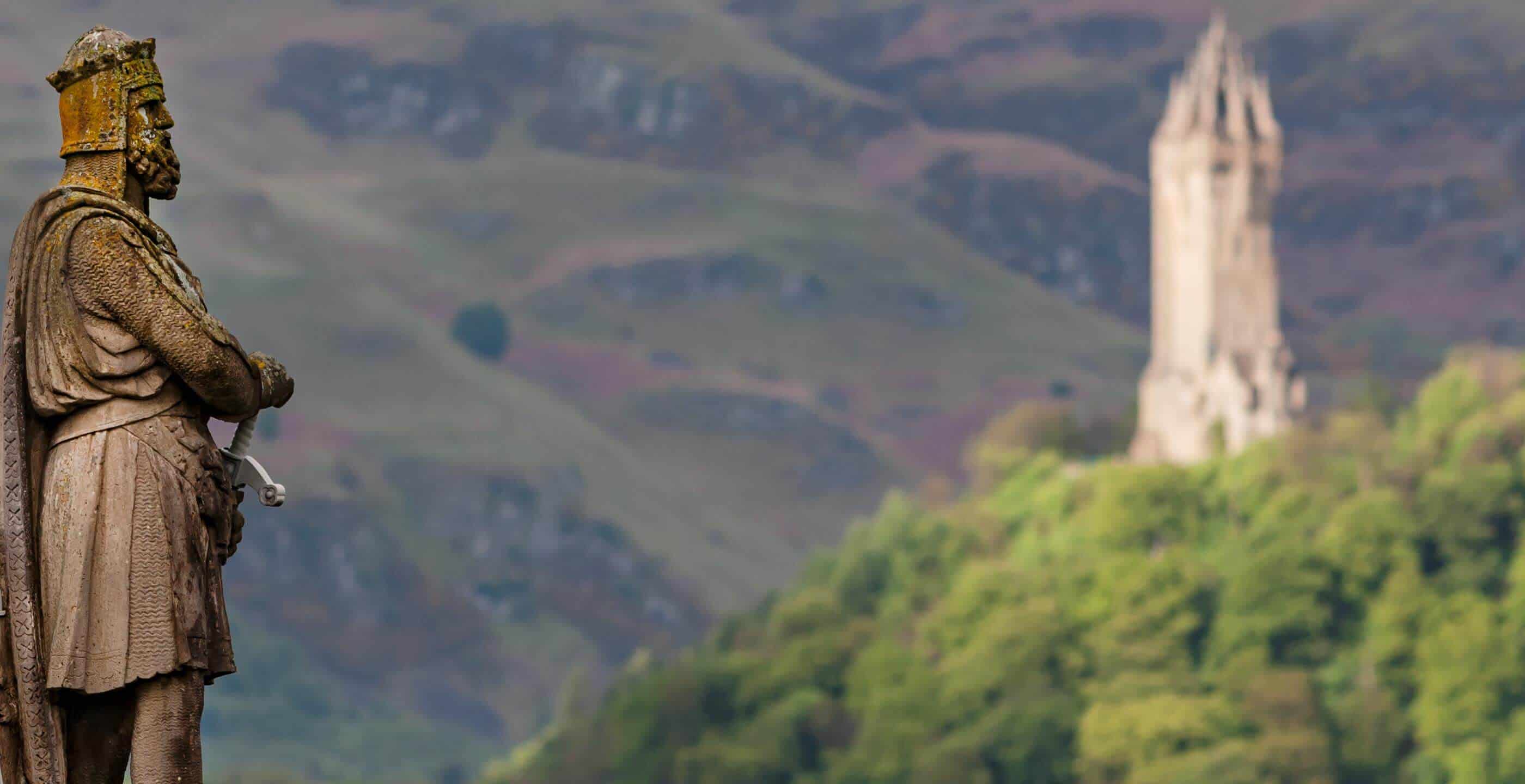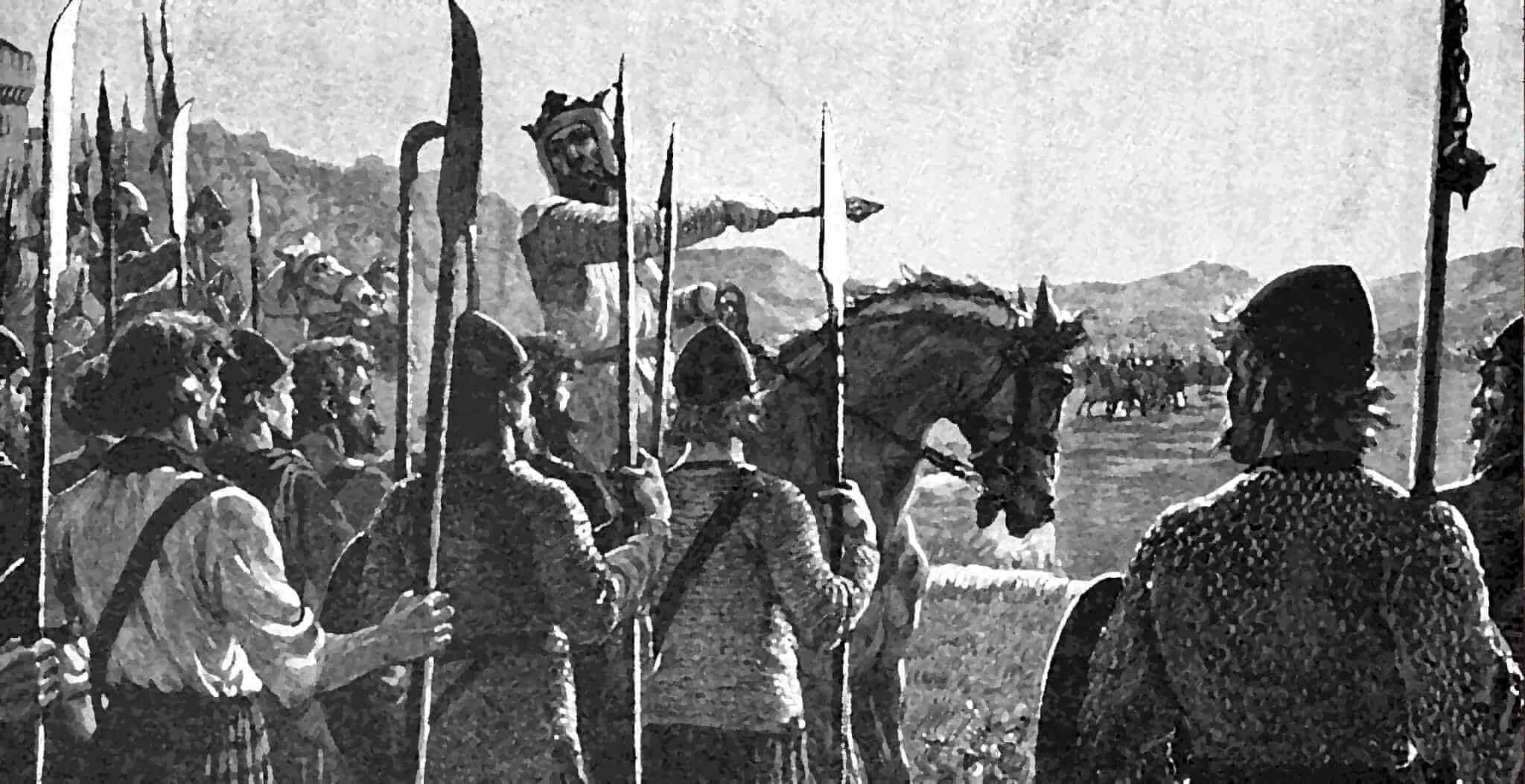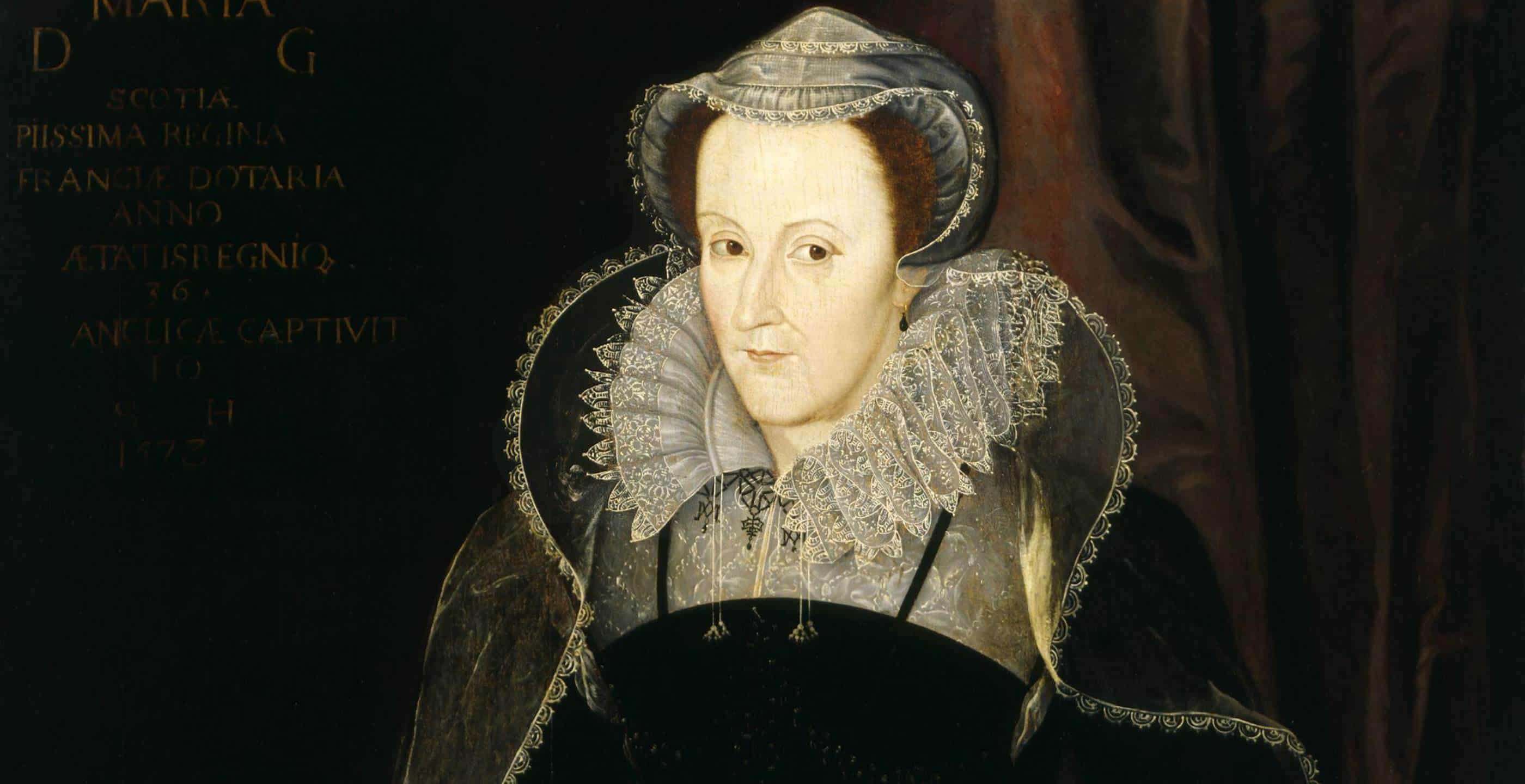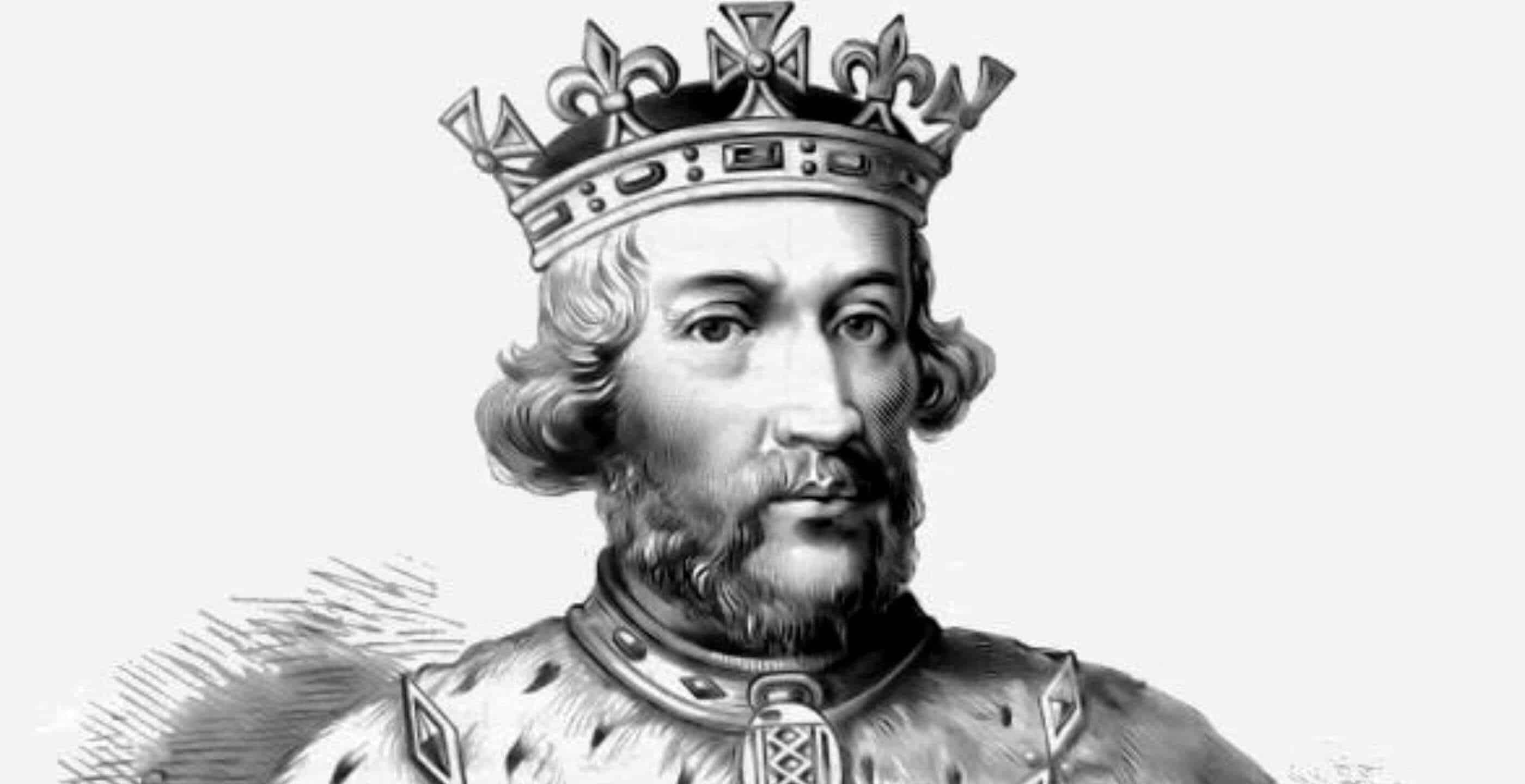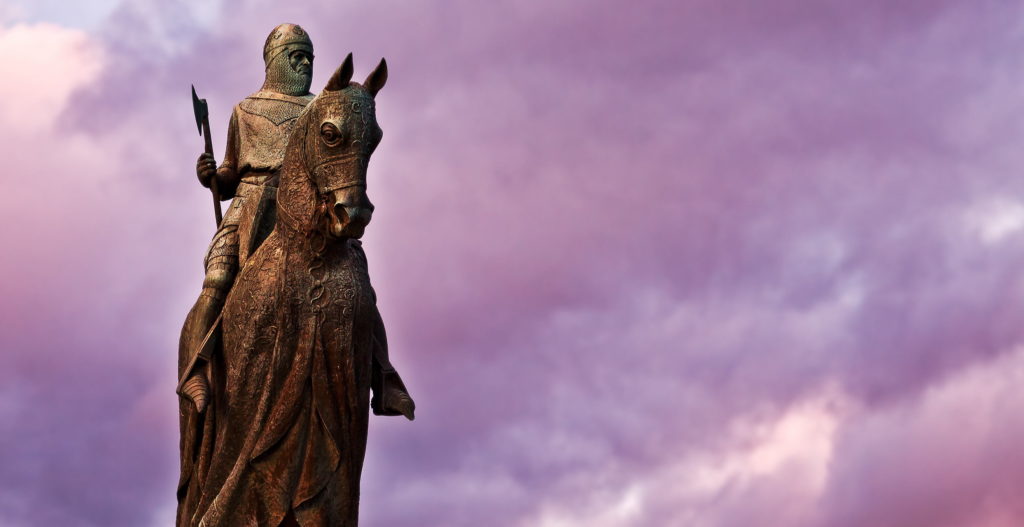Sutton Bank, North Yorkshire: a dramatic inland cliff, with a near vertical drop of around 140 metres from the top to the bottom. It was formed during the last Ice Age around 20 thousand years ago. The view from the top today is spectacular, with wonderful views over the Vale of York and the Vale of Mowbray.
It is thought to be the location of the Battle of Byland, or the Battle of Scotch Corner as it is sometimes called, fought during the Wars for Scottish Independence.
On 14th October 1322, the view from the top of the bank would have looked very different. The churned up ground, the sea of mud, the gloom cast by palls of smoke hanging over the area from burning towns and villages and many fires, all masking any view the English army had of the advancing Scots. The fields on the top, towards Rievaulx Abbey, would have been covered with the encampments of this large English army, while to the west of Sutton Bank, in the Vale, would have been the steadily advancing Scottish army, many less in number.
There has been some debate as to the actual site of the Battle of Byland. It is thought to be somewhere around Old Byland – not the Abbey – and the main battle is thought to have been fought on Roulston Scar, the escarpment just to the south of Sutton Bank. (Roulston Scar is also the site of a massive Iron Age hill fort built around 400BC).
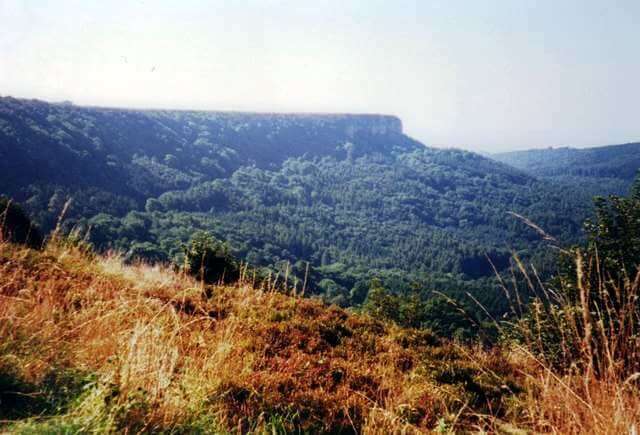
Following Edward I’s invasion of Scotland, his English garrisons occupied many Scottish castles. Years of warfare followed, with the Scottish nobles rebelling against the English. In 1306, Robert the Bruce, having proclaimed his right to the Scottish throne, was crowned king of Scots at Scone Abbey in Scotland. He crushed those against him, and the people of Scotland began to look to him to free them from the English tyranny. Edward I died in 1307 while moving to engage the Scots once again. His death encouraged the Scots, as he was succeeded by his son Edward II, who did not have the military experience of his father and was rather incompetent, unlike Edward I who had been known as ‘The Hammer of the Scots’ because of his brutal conduct towards them.
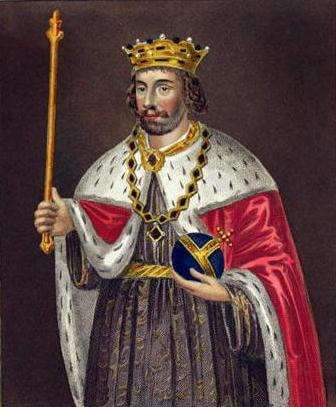
During his reign, Edward II was involved in a struggle with rebel barons in England while battling the Scots, and his army suffered many defeats. Robert the Bruce, after his Bannockburn victory against the English in 1314 made many incursions into the English lands in the north, gathering booty and replenishing the Scottish coffers.
Having successfully beaten his rebellious lords at the Battle of Boroughbridge in March 1322 and encouraged by this success, Edward II turned his attention to Scotland and marched on Edinburgh with a large army. This was to be his last campaign into Scotland. Robert responded with his scorched earth policy – ahead of the advancing English, driving out livestock, burning, destroying, trampling crops – so that the English would find no sustenance on the way and would turn back. Famously it was said that the only thing left to eat in Lothian was an old lame cow; the Earl of Surrey is supposed to have said ‘this is the dearest cow that I ever beheld; for of a certainty it has cost a thousand pounds and more’.
Edward reached Edinburgh, but due to the wet weather, lack of shelter and food, his army began to suffer and became apathetic, ill and demoralised. Edward ordered the slaughter of remaining Edinburgh inhabitants (a lot had fled); the English army ran amok and then retreated into England, harried by the Scots, and at around half its original numbers. They straggled back towards York, committing appalling atrocities in their retreat.
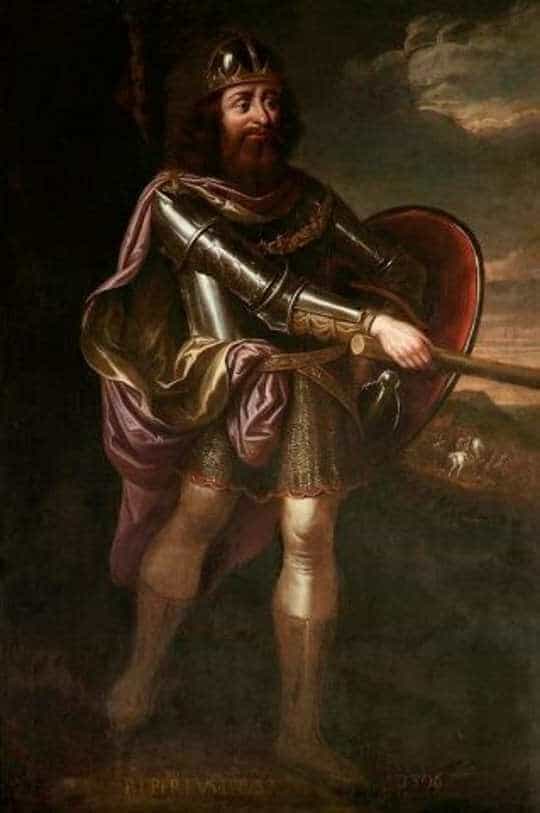
In response, Robert the Bruce had taken an army of around 20,000 to the west. Edward heard of this while travelling his way south, and ordered northern lords to attend him around Sutton Bank to assist. Robert the Bruce reached Carlisle and Lancaster, laying waste as he went, and then came across the Pennines to Northallerton where he was joined by Sir James Douglas. Their army marched south overnight, hoping to surprise the English who had by then taken refuge on the Hambledon Hills. He received news that Edward II was at Rievaulx Abbey (or Byland Abbey, accounts differ) and planned, if possible, to capture him to bring the Wars of Scottish Independence to an end. The English heard of the Scottish advance and moved at Old Byland to hold the ridge and block the path up to the top. While awaiting reinforcements, Edward spent his time drinking and feasting at the Abbey. Extra reinforcements from the south supplemented the number of men to a probable 65,000 according to the Lanercrost Chronicle (a northern English history).
Robert the Bruce planned that Sir Walter Stewart (one of his commanders) was to break through to Rievaulx, once the English line had been broken at Roulsden Scar. He could have gone round the ridge and then to Rievaulx, around 15 miles, but decided to attack in case the delay allowed Edward more time to escape. The Scots hid in the trees at the foot of the Scar, shrouded by these and by the smoke from fires.
Bruce assaulted the ridge causing the Earl of Richmond (Edward’s commander) to respond by sending thousands of troops to counter, having the advantage of the heights and in numbers, but Highlanders in the Scottish ranks then attacked up the flanks, being used to mountainous conditions. Bruce and some of his men made their way unnoticed, stealthily, up onto Shaws Moor where the English were encamped and then, through the unprotected rear ranks, charged, roaring, crashing through the English lines, causing the subsequent confrontation to end in a rout. The armies below, hearing the triumphant Scots, looked up to see the Scots on the top of the ridge, causing the remaining English to flee for their lives if they could; the Earl of Richmond was captured, along with other notables.
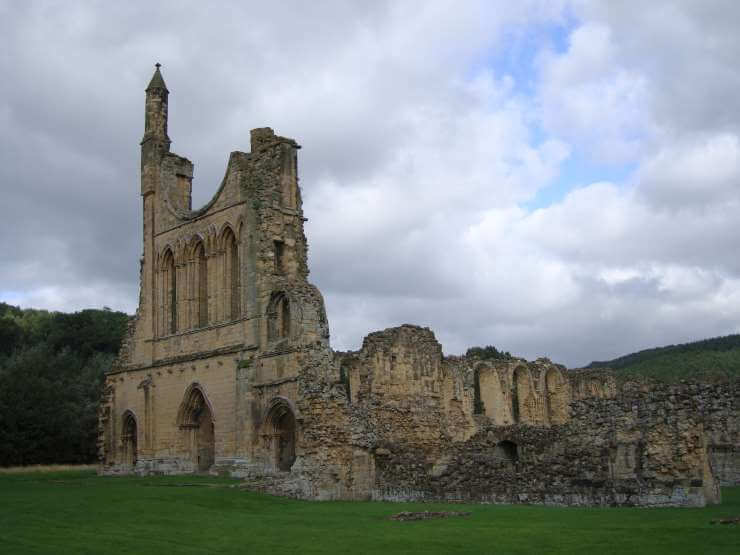
The Scottish cavalry led by Sir Walter Stewart went after Edward, galloping on towards the Abbey and Edward fled, leaving everything behind, desperately trying to reach the coast at Bridlington to board a ship. He had been settling down to a feast at the Abbey but had had to flee in haste for his life. He managed to evade his pursuers in the dark, but at Bridlington discovered no ship available and so turned for York, riding flat out. From York he managed to make his way to Burstwick and from there, back to London.
The remains of the English army made their way to York seeking protection. Edward had left all his finery, treasure and the Great Seal of England at the Abbey – all then captured by the Scots. The victorious Scots raided the abbeys and made their way back north after plundering and moving through into the Wolds as far as Beverley. York was a fortified city and so was spared. Robert’s army set about making castles unusable and demanding payment from towns and villages – those that could not pay were looted and burnt. The monasteries and priories tried to save their wealth by moving their riches south before the Scottish army arrived, but had to pay heavily and never really recovered their former riches. The treasure gathered on the way back to Scotland helped Robert to make a start rebuilding his realm.
There are two Scotch Corners in Yorkshire – one on a well known major road (the A1) – and the other, thought to be on the site of the Battle of Byland, is a little to the north of the village of Oldstead, on the promontory of the hill by Sutton Bank known as Scots Corner, or Scotch Corner. An old ‘drovers road’ runs through the site, used by the Scots in later centuries to bring livestock south to sell. There used to be an inn there – the Scotch Corner Inn. When this and the farmhouse fell into ruin, rather fittingly a chapel was built out of the old stone in 1957 to honour war dead in the Second World War, on the site of the battlefield.
Today, there is the Sutton Bank National Park Centre on the top of the cliff, and the Gliding Club. There are many paths and routes over it, where a visitor can walk over the ground where this bloody and fierce battle was fought.
Published: 18th November 2018
